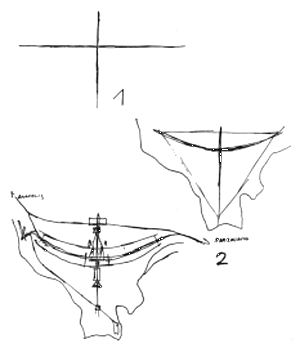Facts
Travel
Hotels
Restaurants
Business
Photos
|
History of Brasília
 Brasilia Homepage Brasilia Homepage
 Brasilia Facts Brasilia Facts
Photos: Government of the Federal District
Brasília was officially opened on April 22nd 1960, but the preparations started more than two centuries ago.

The first two Brazilian capitals, Salvador and Rio de Janeiro, were built by the coast. Since the second half of 18th century, the governants (the Portuguese King, the Brazilian Emperors and the Brazilian Presidents of the Republic) had had interest in moving the capital to a more interior area, less exposed to maritime raids.
In 1823, José Bonifácio de Andrade e Silva, one of the mentors of the Brazilian Independence (conquered in 1822), is one to propose the moving, already suggesting the name Brasília.
In 1891, the first Constitution of the Brazilian Republic (proclaimed in 1889) determined that a new capital would be built; in 1894, a area of 14,400 sq.km. was reserved for the capital. On September 7th 1922, the first stone of Brasília is laid, in a spot which today is administered by Planaltina, one of the satellite cities of Brasília.
In the term of President Eurico Gaspar Dutra (1946-1950), Brazil was living a prosperous period (the war had approached Brazil and USA), and the changing of capital left the paper to become reality. In 1955, the Comission for the New Federal Capital chose the spot in which Brasília would be built.
In 1956, Juscelino Kubitschek de Oliveira is elected President and creates the Company of Urbanization of the New Capital (NOVACAP).
Kubitschek invites a young architect, Oscar Niemeyer, to command the project. In the same year of 1956, the work on site starts. In 1957, a public contest is won by urbanist Lúcio Costa, who presented the inovative ideas for the design of the new capital, in his work which became known as Plano Piloto (Pilot Plan).

Juscelino Kubitschek, or JK, had the motto "fifty years in five"; his plan was to make Brazil grow during his five year term as much as the previous fifty years; JK invited car makers (like Ford, GM and Volkswagen) to come to Brazil, and opened several highways (in detriment of railways) to stimulate cars selling. However, JK's darling was Brasília; to have the city finished still during his term, he didn't hesitate in allocating financial and human resources into the works; several Boeings were rented to fly cement, sand and other supriments into the sites.
Juscelino was so obsessed with the idea of being founder of Brasília, that he officially opened the city on April 22 1960, before it was finished.
Right from the beginning, the growth of Brasília was superior to the plannings. According to the original plans, Brasília would be a city for government authorities and staff. However, during the construction period, many Brazilians from all over the country (but particularly from the Northern and Northeastern regions) migrated to Brasília; these migrants were called "candangos". The candangos were supposed to go back home when Brasília was finished, but most didn't; many just couldn't afford leaving, and most saw Brasília an opportunity for a better life.
To accommodate the candangos, small villages were built in the vicinities of the Pilot Plan. As more and more migrants were attracted by the opportunities of the growing capital, these villages grew and became the Cidades Satélies (Satellite cities) of Brasília.
Until the 1980s, the mayor of Brasília was appointed by the Federal Government, and the laws of Brasília were issued by the Federal Senate. After the Constitution of 1998, Brasília gained the right to elect its Governor, and a Districtal Assembly was elected to exercize the Legislative Power (there are still some differences between Brasília and other Brazilian cities, though).
|
|



